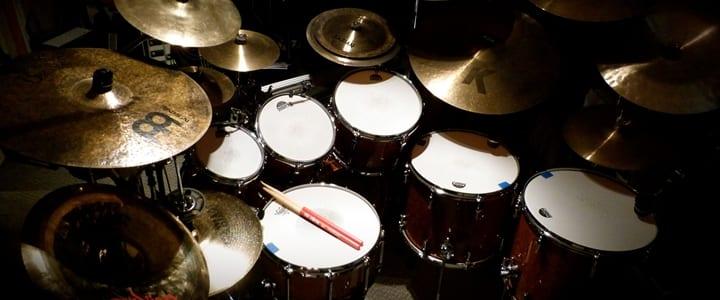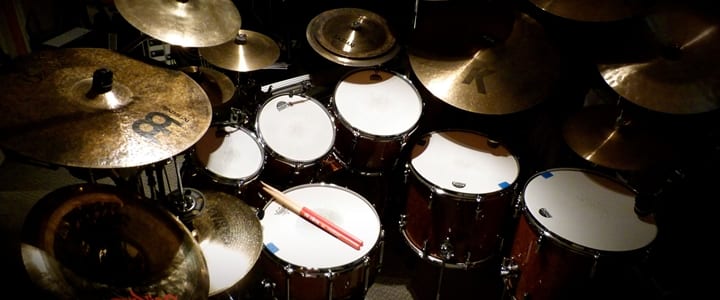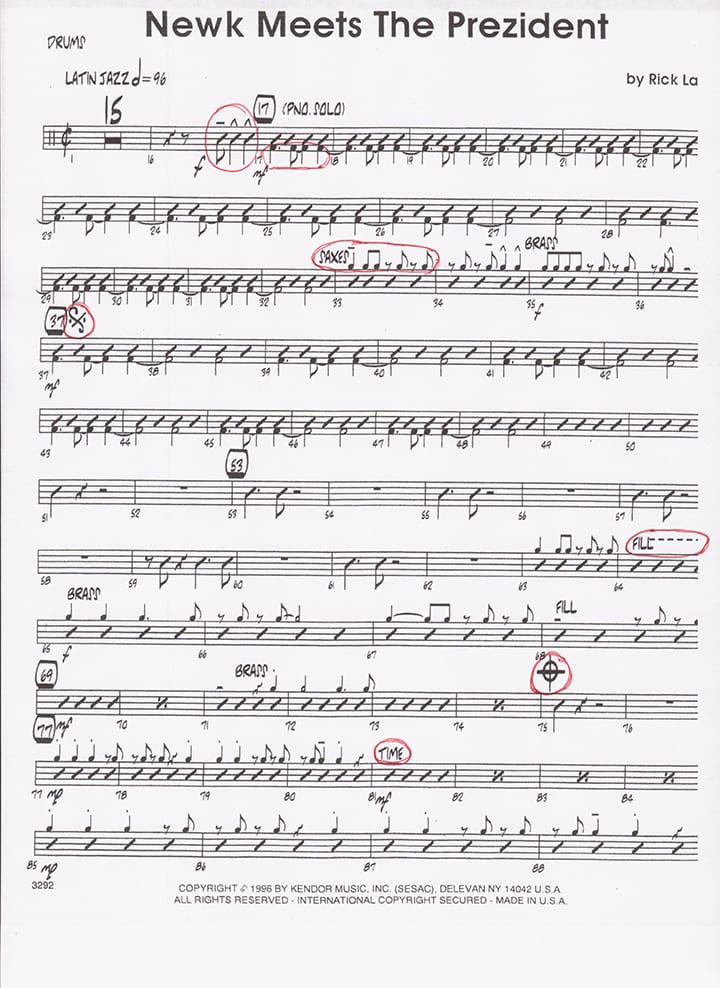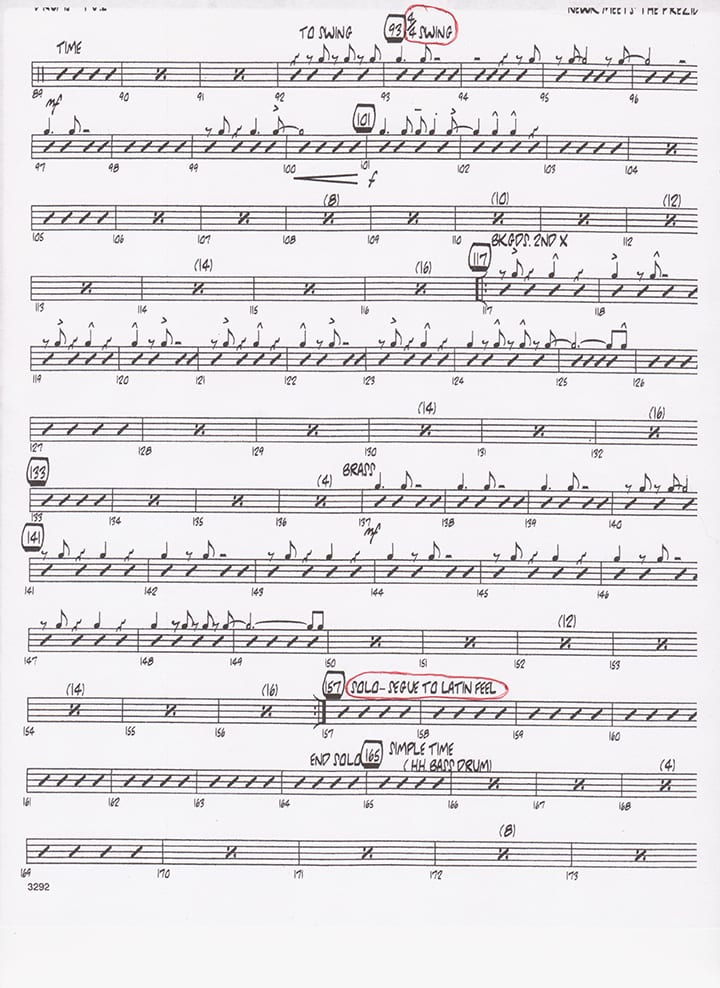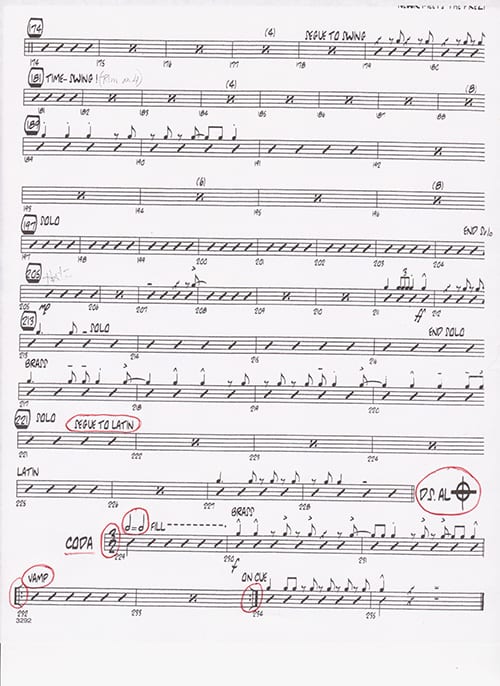If you just started learning drums, you may feel a bit intimidated when it comes to reading drum charts and drum tabs. The good news is, you’re not alone. While it may seem daunting now, with a little practice you’ll be able to understand and read drum charts and drum tabs with ease. To help you get started, here’s an easy-to-follow beginner’s guide from drum instructor Tracy D…
Drum charts, drum tabs, and drum notation are all terms you’ll come across when you’re learning drums. This is especially true if you play in a marching band or ensemble.
As a beginner, you may find drum charts to be a bit intimidating. You may also encounter drum tabs or solos with every note written out. I’ll cover each of these so that you’ll be able to read drum tabs with confidence.
First, I’ll show you how to figure out what’s going on in the following drum charts. For this, I’ll be using a part from my jazz band days (this type of chart is typical for a jazz band or big band ensembles).
How to Read Drum Charts
Refer to the sheet music that follows; sections of the chart are circled in red ink for you to follow along.
Page 1
Meas. 16: These are ensemble figures, and the whole band will play these notes in unison. Notice the elongated note heads — look for these throughout your piece and nail them.
M. 17: This indicates timekeeping with a specific bass figure (in this case, it’s a Tumbao pattern).
M. 33-36: The voices that carry these figures are indicated. You should hit with them, usually with accents on the snare drum (and sometimes adding hats or cymbals).
M. 37: The segno (sign) indicates the beginning of a section that will be repeated.
M. 64: Fill — you have some leeway for creative control, but stay true to style and mind your count.
M. 75: The coda symbol indicates a jump to the concluding section, which will be marked with the same sign (or the word, “coda”).
M. 81: Time, in this case, means play the original groove.
*Courtesy: “Newk Meets the Prezident” Lawn, Rick N.d. New York: Kendor, 1996. Print.
Page 2
M. 93: Be alert, the feel changes here!
M. 157: Solo — generally you’ll want to stay true to style, but here, you want to change the feel about halfway through.
Be sure to count so you don’t get lost.
Page 3
M. 221: Use this solo to return to the original feel and style of the piece.
M. 228: Dal Segno al Coda (from the sign to the coda) — here, return to the sign at m. 37, and play to the coda sign at m.75 (not playing m. 75) then jump ahead to “coda” at m. 229.
M. 229: (Coda) There are a couple things going on here. The meter changes to 3/2. The “half note = half note” means that the note value for the tempo stays constant even though the meter has changed.
M. 232: Vamp — Keep time until the cue. The number of repetitions may vary.
*Note: If you’re playing a piece that has extended periods of rests or repetitive patterns, it can be easy to check out mentally. To avoid this, be sure that you can so you don’t lose your place.
Where to Find Drum Charts
If you want to practice reading or playing along with drum charts, ask your drum teacher for some sample sheet music. You can also find drum charts online. Here are some of the best websites to find drum sheet music.
Online Drummer
Online drummer has note-for-note sheet music available to download. You can search by song or by level.
Drum Central
Drum Central provides free downloadable drum transcriptions. Search their database by artist to find the drum sheet music for your favorite songs.
DRUMSCORE.COM
You can search DRUMSCORE.COM by artist or by drummer, however, most of their drum music costs about $3.99.
Drum Tabs
Drum tablature or drum tabs are different from traditional drum notation. Drum tabs are generally comprised of the same number of lines as there are instruments in the music.
The dashes are usually broken up into 16ths, and if there’s a “note” to be played, it’s shown by the use of a corresponding symbol. Don’t play anything on the dashes. Traditional sheet music will use a rhythm staff.
Drum tabs are typically easier to find than sheet music, so many drummers will try to find drum tabs for their favorite tunes.
How to Read Drum Tabs
Here is a basic chart with some variations of the symbols used. Different authors may use different forms.
The Most Basic:
B = Bass Drum
S = Snare Drum
H = Hi-Hat
T = Tom
Drum Variations:
BA = Bass Drum
BD = Bass Drum
B1 = Bass Drum #1
B2 = Bass Drum #2
T1 = Tom 1 (T2 = Tom 2, etc.)
TT = Tom Tom
F = Floor Tom
FT = Floor Tom Cymbals and Hi-Hats
RC = Ride Cymbal
CC = Crash Cymbal
SC = Splash Cymbal
OH = Open Hi-Hat
SH = Slightly Open Hi-Hat
CH = Closed Hi-Hat
HF = Hi-Hat (played with foot)
Percussion:
CB = Cow Bell
TA = Tambourine
SH = Shaker
WB = Wood Block
CL = Claves
BE = Bell
*Courtesy of DrumTabs.org
Let’s take a look at the drum tabs for Aerosmith’s “Walk This Way” to point out the use of the lines and symbols. The legend indicates that the hats will have a closed (x) and open (o) pattern. The instrumentation is listed vertically, and the drum tabs read horizontally. Pretty easy, right?
The drums here are notated with an “o” and the cymbals/accessories are represented by an “x”. Accents may be notated with a capital X. This chart is good for those who are new to drum tabs, because the groove is straightforward, and the song sections are clearly marked. (The first dash in each measure is a placeholder, not an indicator of time passage).
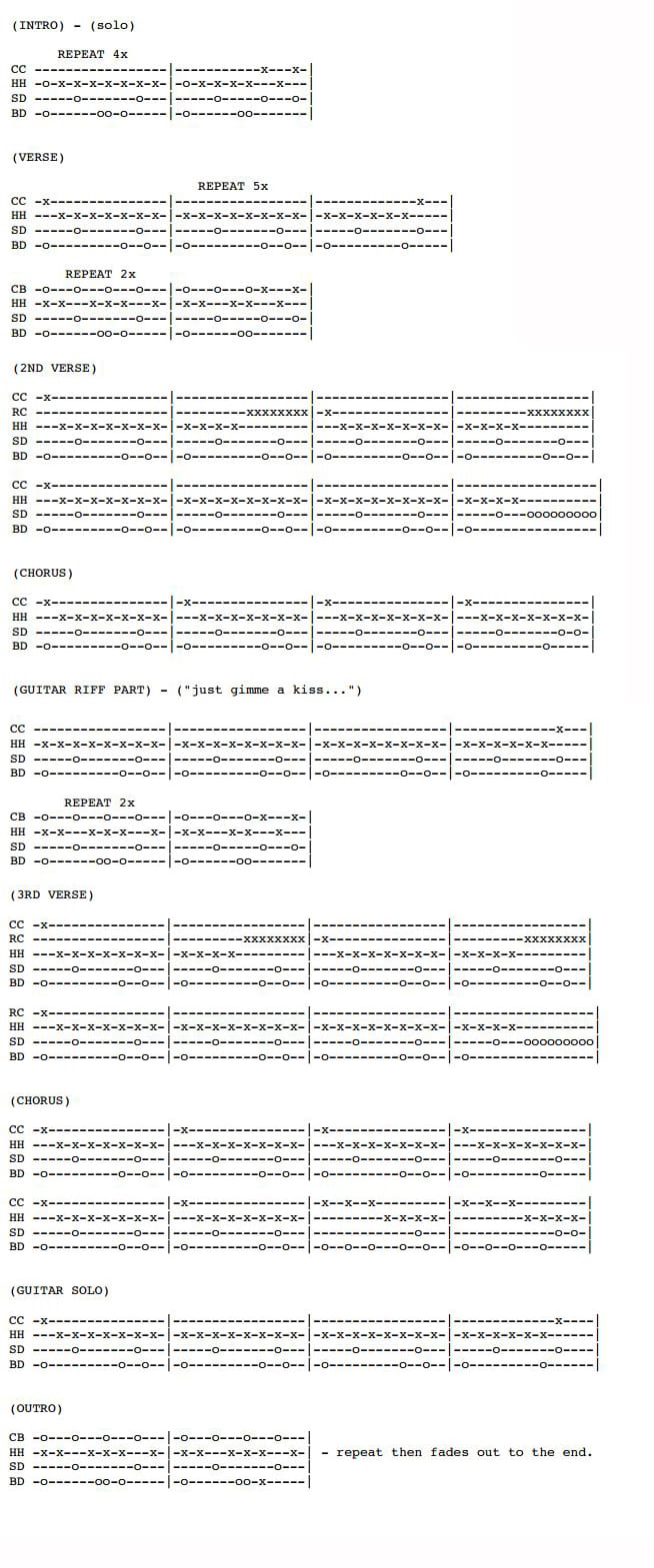 * Tab courtesy of blindleaf.freeservers (link broken as of 1/11/16)
* Tab courtesy of blindleaf.freeservers (link broken as of 1/11/16)
How to Find Drum Tabs
Like drum charts, there are places online where you can find drum tabs for the songs you want to play.
911TABS
911TABS lets you search by artist or song. In addition to drum tabs, you can also find guitar tabs and piano music.
DrumBum
Search for drum tabs and learn more about reading drum tabs and drum music.
UltimateGuitar
Don’t let the name fool you; UltimateGuitar has lots of resources for guitar players, but you can also find drum tabs for just about any song you want to play.
Drum Set Notation
Now, let’s look at standard notation as it appears in sheet music for solos, etudes, and fully-notated drum set music. These exercises are very basic grooves with the bass drum notated on the bottom space, the snare drum on the second space down, and the hats on the top.
It’s in 4/4 or “common” time (four beats, with the quarter note getting the beat). This is broken up into 8th notes — you can see this because there are eight strokes on the hats. Count those: 1 & 2 & 3 & 4 &. The corresponding notes on the drums will line up directly with the hats.
There are two measures per line. In the first measure, in the bass, you see a little squiggle. This is a quarter rest and it means that you refrain from playing that voice for the duration of a quarter beat. Next, you see what appears to be an odd looking number seven. This is an eighth rest, and it means that you refrain from playing that voice for the duration of an eighth. Pretty simple!
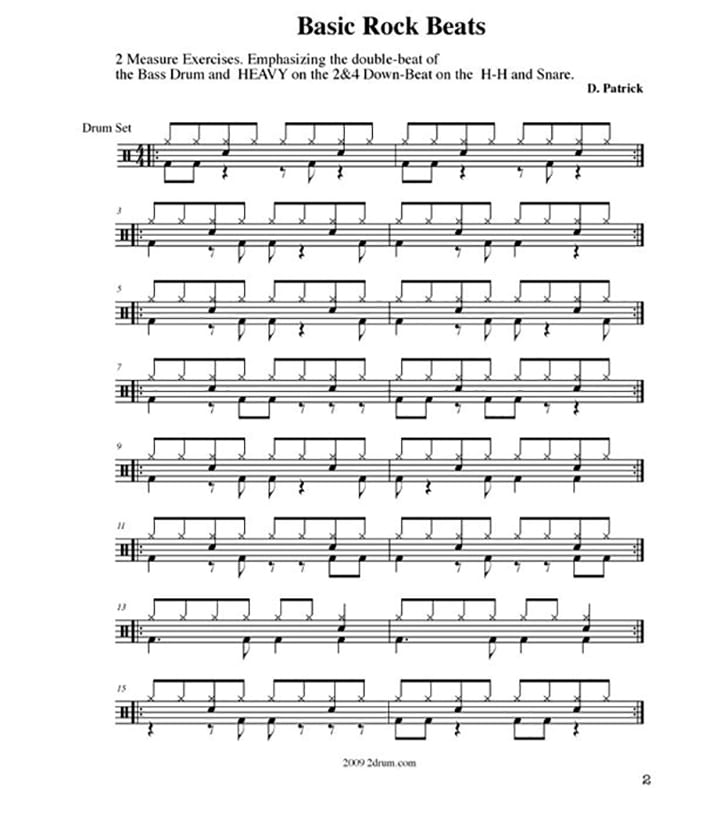 * Exercises courtesy of 2drum.com
* Exercises courtesy of 2drum.com
Note: If you’re playing a piece that has extended periods of rests or repetitive patterns, it can be easy to mentally checkout. Be sure that you count so you don’t lose your place.
How to Use Drum Charts and Drum Tabs
At this point you may be thinking, “I’m not a drum major and I don’t play in a marching band, so why do I need to learn drum charts and drum sheet music?” Well, regardless of your drumming goals, learning to understand drum charts can help you make sense of the music and help you develop your drumming skills. Eventually, with enough practice, drum sheet music can be your secret weapon!
Now you have some direction to help you understand drum charts, sheet music, and drum tabs. It’s important that you become familiar with different musical styles, so you can play with confidence. You can generally find a recording of just about any song, so give it a listen while reading your chart.
How has learning to read drum music helped you become a better drummer? Let us know in the comments below!
 Post Author: Tracy D.
Post Author: Tracy D.Tracy D. teaches percussion and drum lessons in Edmond, OK, as well as online. She has been playing the drums with various bands for more than 13 years. Tracy earned her Bachelor’s in Music Education from Oklahoma Christian University and has played with the OKC Community Orchestra since 2009. Learn more about Tracy here!
Photo by eric.mailloux
Maile Proctor
